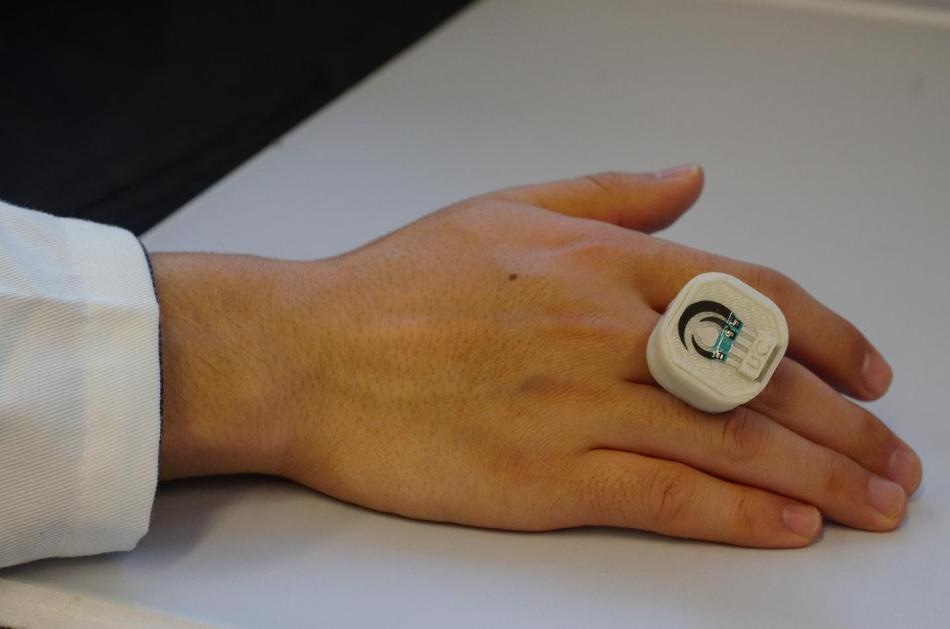Oct 12 2017
Wearable sensors are redefining the tech-world as these can track critical processes in the body, such as heart rates. These devices are even becoming fashionable, with most of them featuring sleek and stylish designs. However, in addition to tracking the body’s critical processes, wearable sensors can also be used for detecting threats that are external to the body.
 A first-of-its kind ring sensor can detect chemical and biological threats. (Credit: American Chemical Society)
A first-of-its kind ring sensor can detect chemical and biological threats. (Credit: American Chemical Society)
Now, Scientists have developed a first-of-its kind sensor device that can do just that. This device has been designed in the form of a ring to make it sleek and fashionable. The study has been published in ACS Sensors.
CCS Insight, a global analyst firm, believes that by 2020 wearable electronics will become a $34 billion industry. Wearable chemical sensors like those made in the form of headbands, wristbands, mouth guards and tattoos are presently being developed, but these kinds of sensors involve certain difficulties.
For instance, a sweat sensor worn on an arm may prove to be handy but this device can be effective only if patients can produce a sufficient amount of sweat. There is a huge need for compact, non-invasive and affordable sensors that can be easily integrated into everyday life. However, next-generation sensors are not only costly but also difficult to develop.
Joseph Wang and Co-workers at the University of California, San Diego intended to design a wearable, portable and affordable sensor that would be able to sense external chemical threats. The Researchers eventually designed a first-of-its kind ring sensor that can be worn on a finger. This ring sensor contains two parts – a unique electrochemical sensor cap for detecting biological and chemical threats, and a circuit board integrated under the cap for processing and sending wireless data to a laptop or smartphone.
The ring sensor can perform both chronoamperometric and voltammetric measurements, allowing it to detect different types of chemical threats.
The Researchers subjected the prototype device to explosives as well as organophosphate nerve agents, both in liquid and vapor phases. The ring-based sensor was found to be highly sensitive and selective. Although this device was specifically developed to detect organophosphate nerve agents and explosives, the team believes that it could also be expanded to other security and hazardous environmental agents.